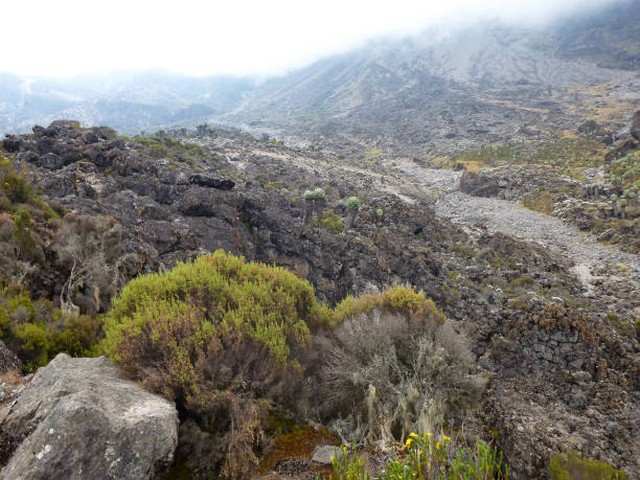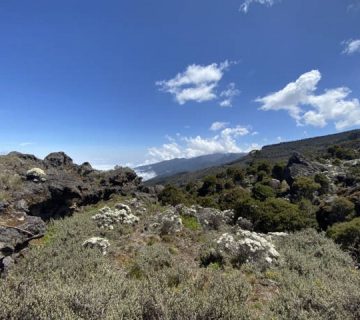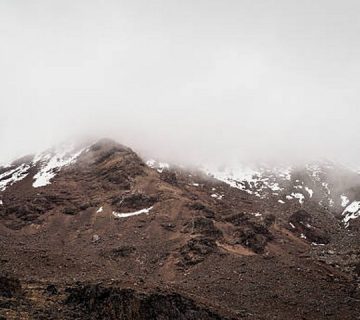Conquering Kilimanjaro: Choosing the Best Thermal Wear for Your Trek
As you prepare to ascend the majestic Mount Kilimanjaro, the highest peak in Africa, ensuring you have the right gear is as crucial as your physical and mental preparedness. Among the essentials, thermal wear stands out as a key element in guaranteeing not just comfort but also safety during your trek. At Kilimanjaro Centre for Trekking and Ecotourism (KCTE), we understand the pivotal role of quality clothing in the success of your climb. In this detailed guide, we will explore the best thermal wear for Kilimanjaro trekking, ensuring you are well-equipped to embrace the Roof of Africa.
Understanding the Climatic Layers of Kilimanjaro
Before diving into the specifics of thermal wear, it’s important to understand the unique climatic conditions of Kilimanjaro. The mountain’s ecological system transitions from equatorial to arctic conditions as you ascend, which means you’ll be experiencing a wide range of temperatures. Preparing for these varying conditions is key to a comfortable and successful climb.
Why Thermal Wear Matters on Kilimanjaro
Thermal wear is not just about warmth; it’s about moisture management, comfort, and protecting against the elements. Quality thermal clothing helps regulate your body temperature, wicks away moisture, and minimizes the risk of hypothermia in cold conditions. Let’s break down the essential thermal wear for your Kilimanjaro adventure.
Layering: The Secret to Adapting Quickly
Base Layer: The layer closest to your skin should be made of a moisture-wicking material like merino wool or synthetic fibers. It keeps you dry and warm by pulling sweat away from your body.
Mid Layer: This is your insulating layer, typically made of fleece or down. It traps heat and provides the necessary warmth as altitude increases.
Outer Layer: The shell layer protects you from wind and precipitation. Look for garments that are waterproof, breathable, and windproof.
Top Picks for Kilimanjaro Thermal Wear
Best Base Layers
- Merino Wool Base Layers: Renowned for their softness, breathability, and odor resistance. Merino wool base layers provide exceptional thermal regulation and are perfect for the fluctuating temperatures on Kilimanjaro.
- Synthetic Base Layers: These are quick-drying and durable. They’re a great choice for trekkers looking for a balance between performance and budget.
Mid Layers That Offer Supreme Warmth
- Fleece Jackets: Lightweight and breathable, fleece jackets offer excellent warmth without the bulk, making them ideal for active use in Kilimanjaro’s varied conditions.
- Down Jackets: For colder parts of the trek, a good down jacket is indispensable. It provides unparalleled warmth-to-weight ratio, essential for the chilly nights at higher camps.
Outer Layers Built to Shield
- Gore-Tex Jackets: These provide robust protection against wind and rain while allowing sweat vapor to escape, keeping you dry from both external and internal moisture.
- Softshell Jackets: Ideal for less extreme conditions, they offer good flexibility and breathability, suitable for the lower slopes of Kilimanjaro.
Accessories: Completing Your Thermal Gear
Don’t overlook the importance of thermal socks, gloves, and hats. These accessories are vital to protect extremities, which are most susceptible to frostbite.
Caring for Your Thermal Wear
To ensure your thermal wear holds up throughout your trek, follow care instructions closely. Avoid fabric softeners with base layers, as they can degrade moisture-wicking properties, and always ensure down jackets are completely dry before storing to maintain loft.
FAQs: Best Thermal Wear for Kilimanjaro Trekking
Q1: Is it better to rent or buy thermal wear for Kilimanjaro?
Renting can be a cost-effective option if high-quality gear is available, but buying ensures the gear fits you perfectly and meets your specific needs.
Q2: How should I test my thermal wear before the trek?
Wear your thermal layers during cold-weather training to ensure comfort and functionality. Adjust your layering strategy based on these experiences.
Q3: Can I use cotton clothing for my base layer?
Cotton is not recommended for any layer while trekking Kilimanjaro because it absorbs moisture and dries slowly, which can lead to hypothermia.
Why Book Your Climb with Kilimanjaro Centre For Trekking and Ecotourism (KCTE)?
Choosing the right tour operator is as crucial as picking the best thermal wear. At KCTE, we not only guide you in preparing effectively for your climb but also ensure you experience the wonders of Kilimanjaro with utmost safety and enjoyment. Our expert guides and well-thought-out itineraries enhance your chances of success and enrich your overall trekking experience.
Ready to Tackle Kilimanjaro?
Equipped with the best thermal wear and KCTE by your side, you’re all set to conquer Mount Kilimanjaro. Remember, the mountain challenges you, but with the right preparation, it also rewards you with one of the most exhilarating experiences of your life. Contact us today to book your Kilimanjaro adventure, where dreams reach as high as the peak itself.




